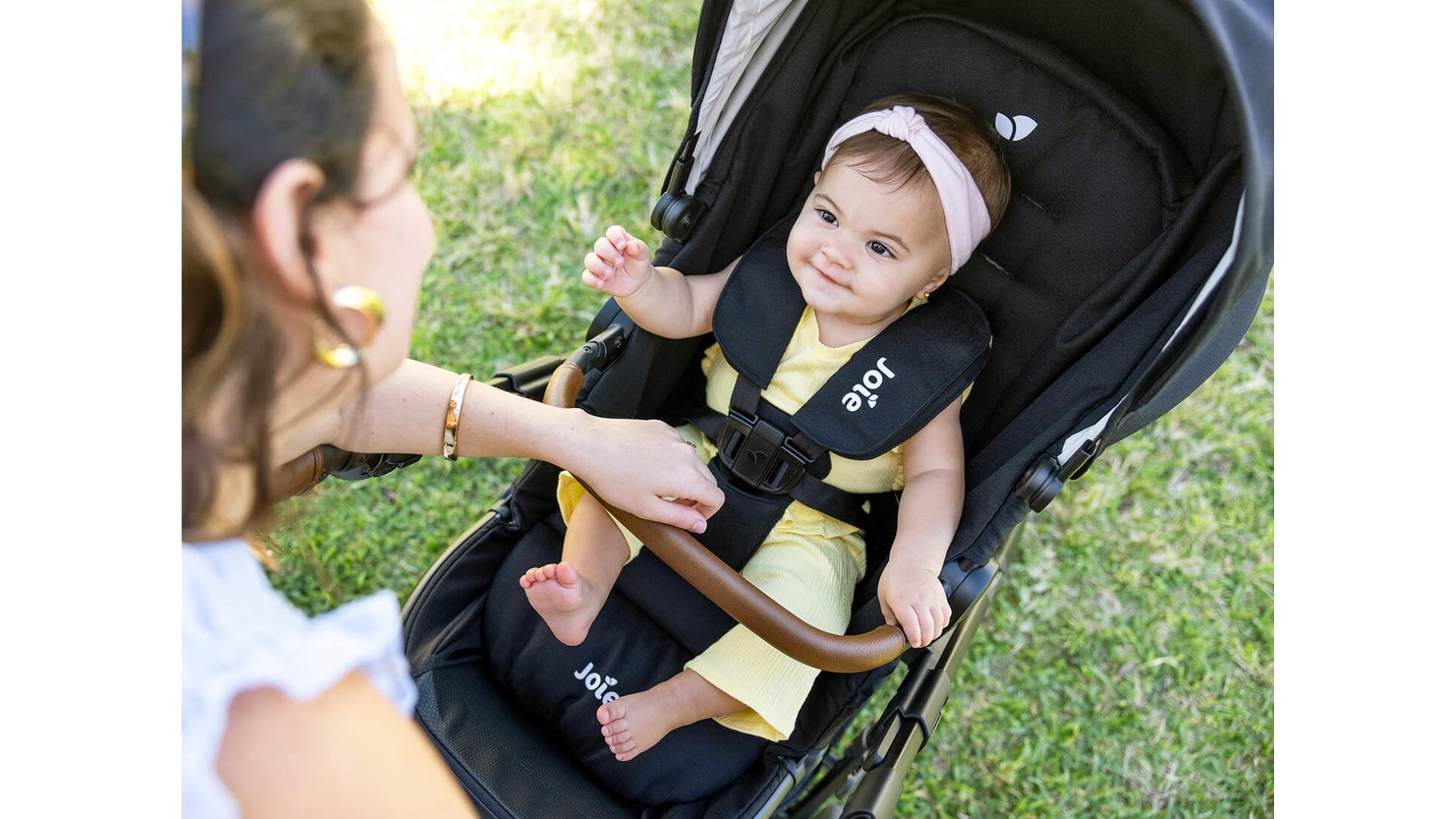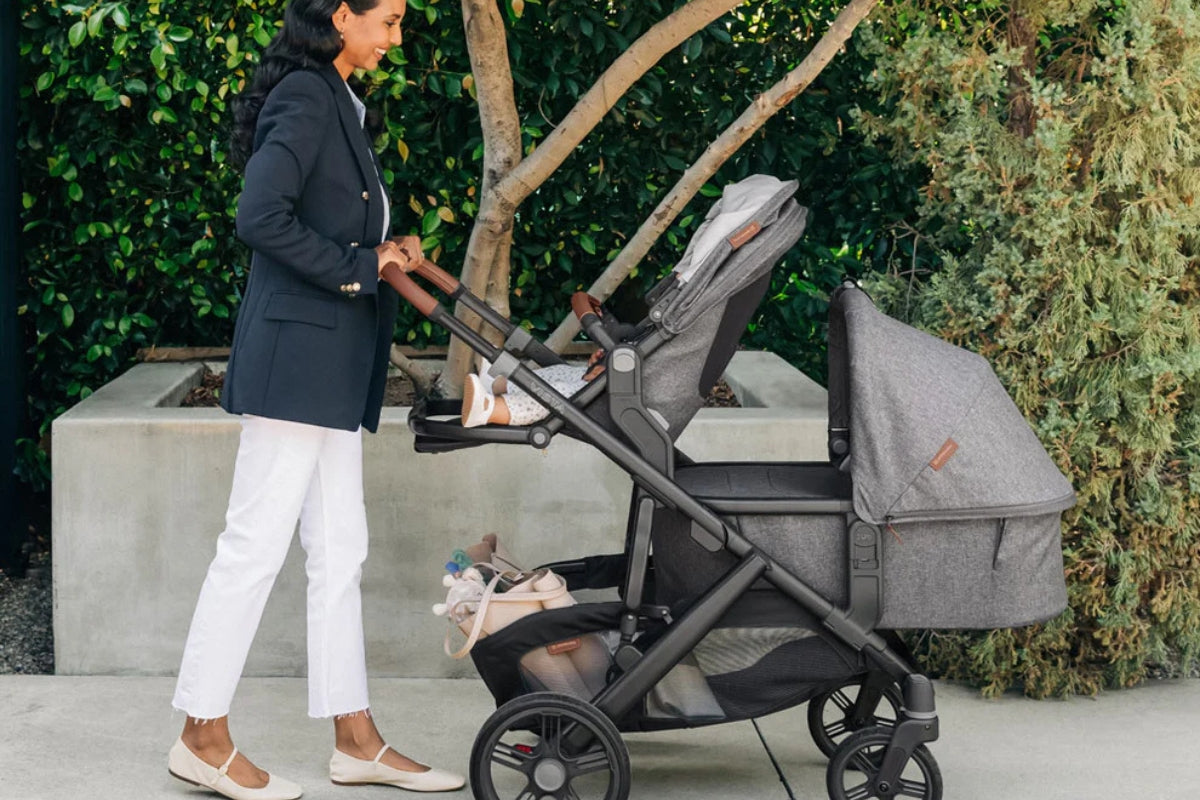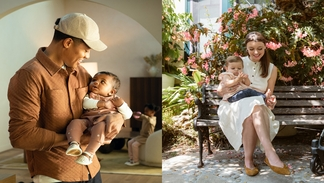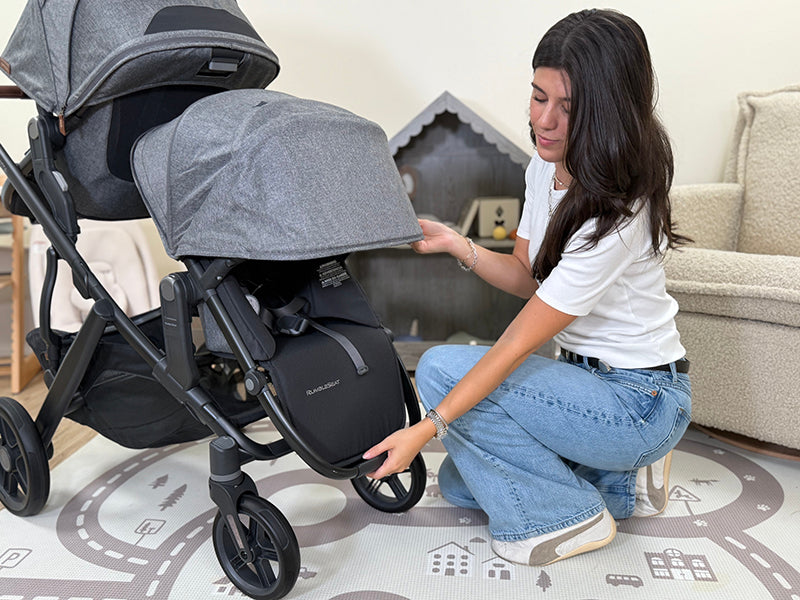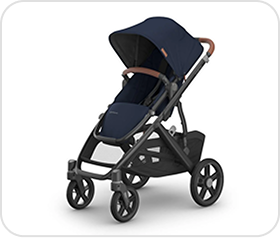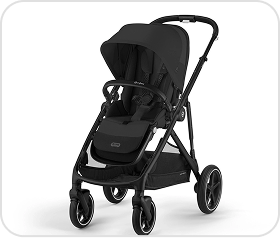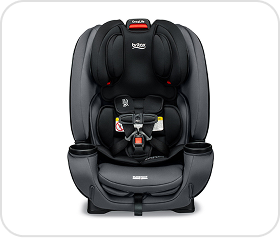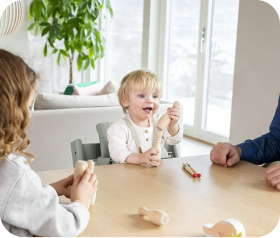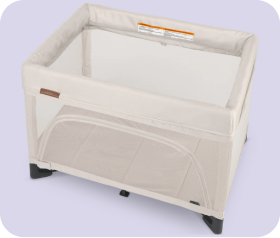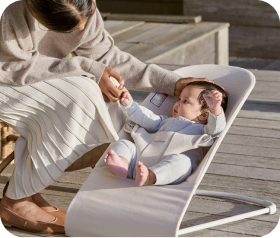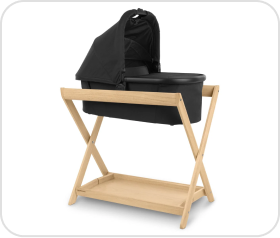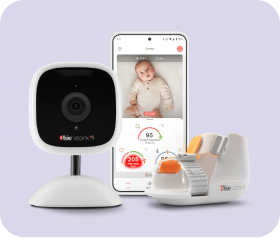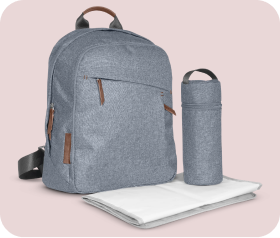
What Type of Stroller Do I Need?

Buying a stroller for the first time means learning a new set of rules and glossary of terms. What kind of stroller do you need for a newborn? Is a jogging stroller only for jogging? If you have a second child, will you need a second stroller? What's a convertible stroller? An umbrella stroller? A travel system?
Here, we explain the uses for six different types of strollers, along with the benefits and limitations of each type.
Full-size stroller

The full-size stroller is the staple: usable from day one until your child is a toddler. Two smaller wheels allow for precise steering, while two larger wheels offer stability. Some full-size strollers can become a double stroller with the purchase of a second seat (see convertible stroller section).
Best for
Families who want a comfortable stroller with lots of room
Age range
Newborn (if baby is fully reclined) to 3+
Benefits
- Can grow with baby from birth to toddler age
- Compatible with infant car seats or bassinets
- Durable and easy to maneuver
- Roomy, comfortable seat
- Ample storage space
Limitations
- Heavier and more difficult to fold than a mid-size or lightweight stroller
- Can be cumbersome for quick trips and travel
Mid-size stroller

The mid-size stroller can be a compromise for families on-the-go. It’s smaller and lighter than a full-size stroller and offers more features than a lightweight stroller, like car-seat compatibility and larger back wheels for better maneuverability.
Best for
City parents with limited storage space; families who often travel or make frequent trips throughout the day
Age range
Newborn (if baby is fully reclined) to 3+
Benefits
- Can grow with baby from birth to toddler age
- Compatible with infant car seats or bassinets
- Lighter and more compact than a full-size stroller
- More sturdy and easier to maneuver than a lightweight stroller
Limitations
- Less room and storage space than a full-size stroller
- Heavier and bulkier than a lightweight stroller
Lightweight stroller

The lightweight stroller’s main selling points are its compact size and ability to fold (which is why some are called umbrella strollers). Many families purchase a lightweight stroller for quick trips and travel in addition to a larger, more durable model.
Best for
Families with older babies or children who are frequently running errands, traveling or using public transportation
Age
6 months and older (unless infant car seat is used)
Benefits
- Can be half the weight of a full-size stroller
- Easy to fold; compact for storing in a car
Limitations
- Can’t be used without infant car seat until baby is six months old; many models aren’t compatible with infant car seats
- Smaller seat is less comfortable; smaller wheels offer less maneuverability than larger strollers
- Limited storage space
Convertible stroller

Shop UPPAbaby Vista
A convertible stroller grows with your family, changing from a single stroller to a double with the addition of a second seat. Some models can even take three kids along for the ride when you add a skateboard-like piece that an older child can stand on.
Best for
Growing families who want to use the same product as both a single and double stroller
Age
Newborn (if baby is fully reclined) to 3+
Benefits
- Can eliminate the need to purchase a double stroller
- Compatible with infant car seats and bassinets
- Many models offer reversible seats, allowing children to face forward or face each other
Limitations
- Uneven weight distribution can make it more difficult to turn
- Back passenger may have limited leg space
Side-by-side double stroller

As a stroller built for two, the side-by-side stroller features identical seats. In some models, the stroller seat can be substituted for an infant car seat.
Best for
Families with twins and children close in age
Age
6 months and older (unless car seat is used)
Benefits
- Weight is more evenly distributed than in a convertible stroller, making it easier to turn
- Children are more accessible to parents and can more easily see and talk to each other
Limitations
- Width can make it difficult to fit through door frames or navigate city sidewalks, grocery store aisles and other tight spaces
- Not all models are compatible with infant car seats
Jogging stroller

Make baby part of your fitness routine with a jogging stroller, which features shock-absorbing suspension, an adjustable handlebar, a hand brake and large, air-filled tires. A swiveling front wheel can lock for increased stability when you’re running.
Best for
Active families who want to take kids out for a run or hike
Age
6-9 months and older (check with your pediatrician)
Benefits
- Can also be used as an everyday stroller and on trails and rugged terrain
- Weight capacity of 70+ pounds allows for years of use
Limitations
- Air-filled tires can go flat
- Can be bulky and heavy for everyday use
To learn more about choosing the right stroller for your family, click here to read our in-depth stroller buying guide!




